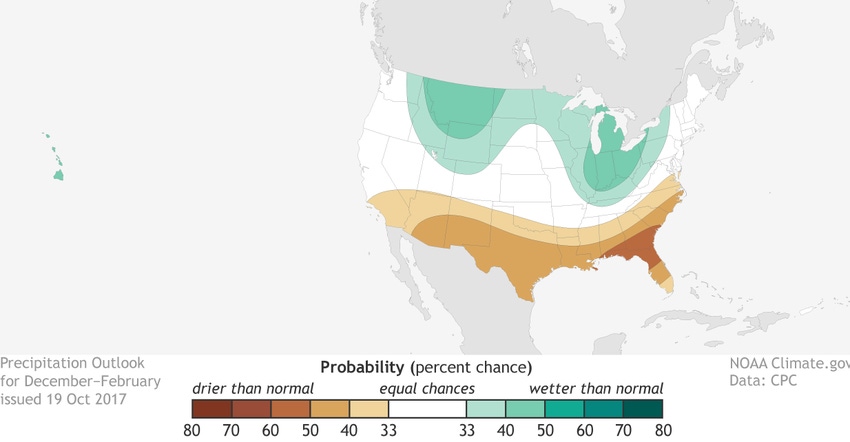
If you liked winter weather last year, you’re in luck again. If you didn’t, well, sorry. A recent official prediction rings with a bit of déjà vu.
Mike Halpert in an Oct. 23 National Oceanic and Atmospheric Administration ENSO Blog post, which monitors and forecasts El Niño/La Niña and its impacts, says the weather this winter for the Southeast has a good chance of being much like it was billed to be last year: below-normal precipitation coupled with above-normal temperatures.
“Both the temperature and precipitation outlooks lean on typical La Niña impacts, particularly those of the past 30 years, and bear some resemblance to the outlooks issued for last winter.
“Winter precipitation outlook favors below-normal precipitation across the entire southern U. S., with probabilities greatest (exceeding 50 percent) along the eastern Gulf Coast to the coasts of northern Florida, Georgia and southern South Carolina. In contrast, above-average precipitation is more likely across much of the northern parts of the country, in the northern Rockies, around the Great Lakes, in Hawaii, and western Alaska,” he writes in the blog, which does a pretty good job of relaying climate science to a general audience.
It is important to note that Georgia, for example, had an extremely mild winter last year, with only two to three nights hitting below freezing for much of the state’s primary crop-growing regions, but a late-spring freeze hit in March dropping temperatures well below freezing for two to three nights, which devastated the state’s blueberry and peach crops.
Above-average temperatures, he writes, will likely occur across the South and extend west through the central Rockies and well up to Maine. Above-average temperatures are also favored in Hawaii and in western and northern Alaska. Chances are greatest in an area extending from the desert Southwest to central and southern Texas and Louisiana (greater than 50 percent).
Probabilities are tilted toward colder-than-normal temperatures along the northern tier from the Pacific Northwest to Minnesota and also in southeastern Alaska, he says, but the likelihood of below-average temperatures across the North is modest, with no probabilities in these regions reaching 50 percent.
The NOAA Climate Prediction Center issues probabilistic seasonal temperature and precipitation forecasts so users can understand risk and opportunities when making climate-sensitive decisions. But Halpert says “even when one outcome is more likely than another, there is still always a chance that a less-favored outcome will occur (witness precipitation during the last two winters in California).”
About the Author(s)
You May Also Like






